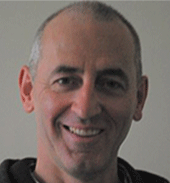All Roads lead to the Thoracolumbar Fascia

Where do you move your limbs from? I guess in terms of body mechanics most people would say the hip and shoulder joints along with the spine. However there’s another story, a story of fascial connectivity. You move your limbs from your Thoracolumbar Fascia (TLF). This is a key natural fulcrum in the fascial network of the body. The fascia fulcrums off the lumbar, lower thoracic and sacral areas. It is integral in offering an anchor for smooth movement of the body limbs and the cranium. Like all fascias it’s part of the connective tissue body and fascias from key muscles blend into it. In particular from the trapezius muscle via the nuchal fascia therefore connecting it to the back of the head, the latissimus dorsi connecting it to the arms and the gluteus maximus connecting it to the legs. The three biggest muscles in the body. Here’s an experiential exercise to help you connect with it and then a movement exercise to notice how you engage it when you walk.
awareness exercise:
Open up to whole body awareness. Drop into sensations. Open up to the felt sense of your arms and legs within whole body awareness. Take a couple of minutes to do this and at the same time connect with the feel of the TLF which is diamond shaped. Now you have opened up to the natural fascial connection between your limbs and this important fascia. How does it feel? Do you have a clear sense of relationship between all the limbs and the fascial diamond. Finally open up to the connection between the back of your head through the trapezius. Does that feel like a vivid felt sense. Now stay with the relationship of all four limbs and the cranium with the fascia and follow how it reorganises itself.
movement exercise:
Stand still for a minute and become aware of your alignment. Open up laterally to your sides and to your front and back so you can orient in space. Find the connection between your TLF and your limbs and cranium. Now slowly walk forwards for about ten paces and notice the movement and relationship between these places. Do you feel like you are walking from this fascial meeting place? Or somewhere else? Turn around and walk another ten paces just observing how things move together. Now if you can, try running and notice how you engage with the fascia at the bottom of your spine. Notice too how your running changes as you keep a gentle awareness to the fascial relationships.
treatment exercise:
The next time someone comes into your treatment room and you make a contact with their sacrum or lumbosacral area. Invite a relationship to the TLF along with its natural fascial flow to the limbs and cranium and just observe how the body responds and tries to bring these important relationships into optimal balance.





 Ged Sumner
Ged Sumner